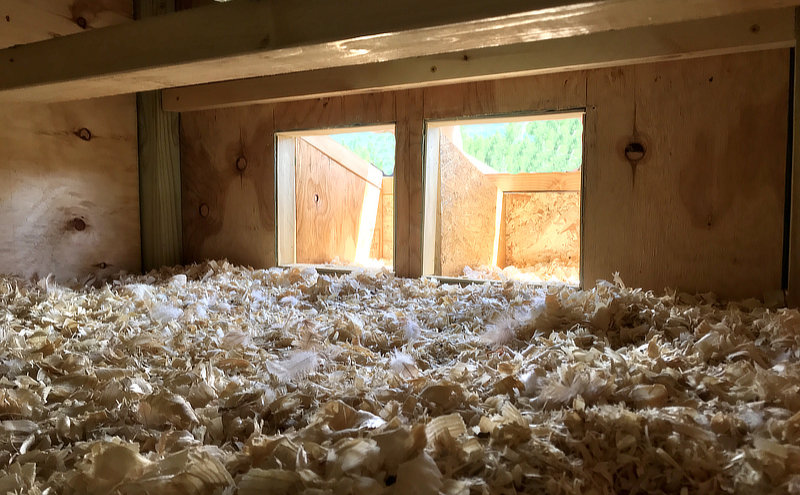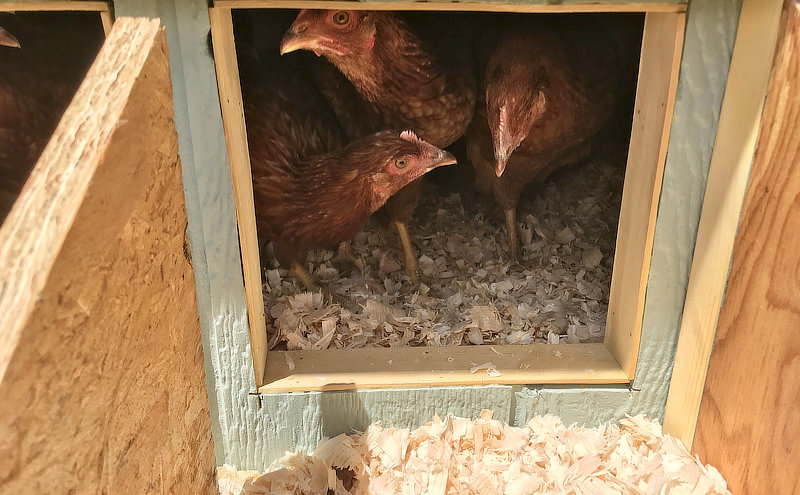Time To Open The Chicken Coop Nesting Box For Business…

I just opened the barrier from the chicken coop to their dual nesting box.
Our ISA-Brown hens are supposed to begin laying eggs a bit sooner than others. Maybe as early as 16 – 18 weeks.
They are right around 15 weeks of age at this time, so I figured it was time to open the nesting door barrier. Just in case.
I have a small flock of seven hens. All the reading I’ve done indicate that two nesting boxes will be enough for that quantity – because they often desire to share the same space. So that’s what I built.
Golf Balls in Nesting Box

What’s that? Golf balls in the nesting box?
Yes. Apparently a hard fake egg (or golf ball) will teach the hens NOT to eat the eggs. Chickens are notoriously curious. They peck everything with their beaks. That’s their “hands” if you will.
They’re going to see those golf balls in the nesting box and peck at them. Immediately it will become clear to them (hopefully) that “eggs” are hard. Therefore no sense trying to eat them, right? We’ll see.
Erring on the side of caution I grabbed two old used golf balls and dropped them in. It was funny because the minute I opened the nesting box roof, a few hens had to check it out!


So now I check every day. I don’t really expect any production for awhile yet, but you never know.
For you experienced chicken farmers out there — any tell-tale signs that they’re about to get down to business??
[ Read: Nesting Box Add-on For Chicken Coop ]
